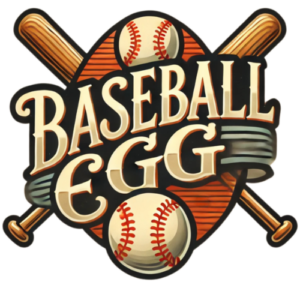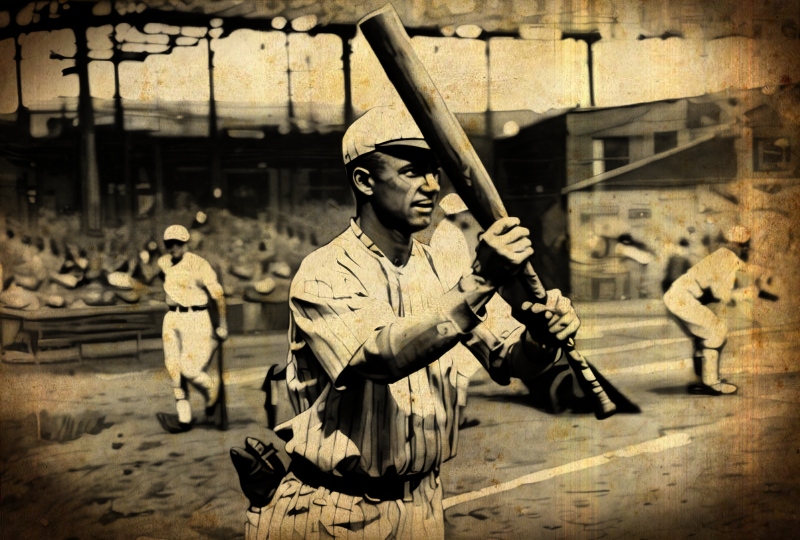A nonsensical fact about our current culture is that outrage comes before investigation. Folks who have no idea what they are talking about have a powerful computer in their clutches that enables them to share their opinion long before they have educated themselves on the topic. If they ever educate themselves at all.
Unfortunately this is the culture we live in. Folks will be outraged about anything, even if it doesn’t make sense.
The first weekend of MLB 2025 was hijacked by a new piece of equipment used by the New York Yankees, reigning American League champions.
On Saturday, it became known that a handful of Yankee batters are using a bat designed by an MIT physicist that places the widest section of the bat lower on the bat. Thus it moves “the barrel” to a spot where batters could theoretically make contact more often. Typically, the widest part (barrel) of a baseball bat is toward the very end of the instrument. These bats used by the Yankees, called “torpedo bats,” have a noticeable bulge about 5-7 inches from the end of the bat.
The Yankees hit a franchise record nine home runs on Saturday, and added four more on Sunday. Reportedly, Jazz Chisholm, Paul Goldschmidt, and a few other Yankees used the torpedo bat at least in some of their plate appearances. Chisholm hit three home runs over the weekend.
Aaron Judge, captain of the Yankees and a two-time Most Valuable Player, hit four home runs over the weekend using a traditional bat. Still: some members of the Brewers, who were the victims of the Yankee home run barrage, cried foul at the use of the torpedo. Damn the torpedo, so to speak.
But the torpedo bat is legal, as they should be.
MLB Rules on Baseball Bats
Major League Baseball’s regulations regarding bats are meticulously detailed to ensure fairness and safety. The primary focus is on the bat’s dimensions, construction, and materials. According to the Official Baseball Rules, specifically Rule 1.10, the bat must adhere to the following specifications:
“Rule 1.10: The Bat
(a) The bat shall be a smooth, round stick not more than 2.61 inches in diameter at the thickest part and not more than 42 inches in length. The bat shall be a single piece of wood, or formed from laminated wood, and may contain grooves or indentations of not more than 1/8 inch deep.
(b) Experimental bats, or bats made with certain experimental processes or treatments, may be used in a professional game if approved by the Professional Baseball Research Committee.
(c) The bat handle may be covered with tape or a gripping substance for a distance not exceeding 18 inches from the end of the handle.
(d) No colored bat may be used unless approved by the Office of the Commissioner.”
Therefore, the rules explicitly address the diameter, length, material, and permissible modifications to the bat. Notably, there is no explicit weight limitation stated within the rule itself, allowing for a degree of variation based on player preference and bat construction. The rule also allows for laminated wood, and alterations such as grooves within set parameters.
In the early part of the 2025 MLB season, a notable controversy arose surrounding the New York Yankees and their use of a new type of bat construction. While the exact details of the construction were not publicly disclosed, it was speculated that it involved a novel layering technique of laminated wood that optimized the “sweet spot” and increased bat speed. These bats were subject to considerable scrutiny from other teams, with accusations of an unfair advantage.
However, after thorough examination by the Professional Baseball Research Committee, the bats were deemed legal under Rule 1.10(b). The committee confirmed that the construction process, while innovative, fell within the established parameters for laminated wood bats. The controversy highlighted the ongoing tension between technological advancement in equipment and the desire to maintain competitive balance within the game. Despite the outcry from other teams, the Yankees were permitted to continue using the bats, as they conformed to the existing rules. This instance illustrates the ongoing evolution of bat technology and the MLB’s efforts to regulate it while allowing for reasonable innovation.
Heinie Groh and the Famous Bottle Bat
You want strange bats? How about the lumber favored by one Henry Knight Groh, better known as “Heinie?”
Heinie Groh was a helluva third baseman, known for his keen batting eye and defensive prowess. But e was also famous for his uniquely shaped bat. Unlike the standard round bats of his era, Groh’s bat featured a distinctive bottle-necked design, with a thin handle that flared out significantly towards the barrel. This unusual shape was a key component of his hitting strategy.
The bottle bat, as it came to be known, was designed to enhance bat control. The thin handle allowed Groh to achieve a quicker, more compact swing, enabling him to react to pitches with exceptional speed and precision. This was particularly advantageous against pitchers with tricky deliveries or late movement. The wider barrel, conversely, provided a larger hitting surface, increasing his chances of making contact.
Groh’s bat was integral to his success as a hitter. He was a consistent contact hitter, known for his ability to hit for average and place the ball effectively. His career batting average of .292 reflects his skill at making contact. Groh was a key contributor to the Cincinnati Reds’ World Series victory in 1919 and the New York Giants’ pennant wins in the early 1920s.
His bat was a symbol of his meticulous approach to hitting. He was known for his analytical mind and his dedication to mastering the nuances of the game. Groh’s bottle bat, while unconventional, was a testament to his willingness to experiment and find any edge he could gain. Although other players did not adopt the design en masse, it stood as a unique and effective tool in the hands of a skilled craftsman. Groh’s bat, and his success with it, cemented his place as one of the most distinctive and effective hitters of the dead-ball era.
Groh’s bat was legal. It was made from one piece of wood. It was not too long, too short, or too wide. No one ever though to challenge Groh’s use of it. Some people laughed at it, but once he hit over .300 several times, and led the National League in hits and doubles (twice) with his bottle bat, no one made fun of Mr. Groh.
Why the Torpedo Bat is not a big Deal…yet
As we’ve explained here, the torpedo bat is legal for use in the major leagues. It’s merely a step in the evolution of equipment in the sport. Will it radically change the game? We won’t know that until we see more players using it for a longer stretch of games. The home run barrage the Yankees had last weekend is a small sample size.
If the torpedo bat is a significant shift in the competitive balance between a batter and pitcher, we’ll know two months into the season. Usually, pitchers are ahead of hitters when the season starts. Let’s see how the run scoring and home run hitting pans out with the torpedo bat once we have enough data to judge the impact.






